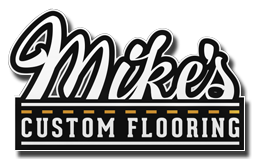Engineered wood floors is fairly popular, being a beautiful option that can be less expensive than hardwood flooring. Today, we at Mike’s Custom Flooring would like to take the opportunity to explain the basics of engineered wood.
Engineered Wood Layers
When it comes to engineered wood floor, the top layer, or decorative layer must be made of wood. Engineered floors can only have a natural layer serve that purpose when compared to laminate flooring, where a printed layer serves as the decorative layer. In the creation of laminate flooring, true wood veneers are used. The decorative surface is not made from real wood, though core HDF material is made with wood chips. The thickness of the real wood veneer used for decoration is unimportant, though it can be sanded more often when the top layers that are thicker last longer. It is important to remember that increasing the thickness of the top layer can raise the final price as well.
Engineered Wood Flooring Core Board
The second part of engineered flooring is the core board. The decorative topcoat can be bonded with this layer. The central board is critical. As a whole, it reinforces and stabilizes the floor. The core is constructed from materials that are superior to solid wood flooring in terms of durability against moisture and temperature fluctuations.
Types of Engineered Wood
HDF-Core Variant. Engineered flooring with an HDF core is a less common option. Their rising popularity is contributed to their adaptability. Making setup a breeze, the central component is compatible with click installation systems that are user-friendly for the do-it-yourself crowd. The overall thickness is often reduced, allowing for smoother transitions between different floor types due to the inherent strength of high-density fiber cores.
Multi-Ply Variant. Being made up of multiple layers, this is the most popular variety of engineered wood flooring. It is similar to that of walking on solid wood. The multiple layers provide extra protection against cupping and over-expansion. The average total thickness is between 13 and 20 millimeters. For widths of up to 350 millimeters, the plywood’s reinforced center provides the support necessary.
Three-Ply Variant. A three-layer engineered floor is also a popular option. Once installed, there is no cupping or overexpansion, and yet the material has a pleasant feel. Between 12 and 18 millimeters are the common total thicknesses. Anything under 200mm should only have a 3-ply core with regards to board widths. The stability of a wide plank wood floor is dependent on its core, which is not as sturdy as a multi-ply core.
Benefits of Engineered Wood Flooring
Highlighting the material’s inherent beauty, engineered wood flooring has a real wood veneer on its top. There are additional benefits to consider that are listed below.
1) Because older houses are more susceptible to the damaging effects of extreme temperature and humidity swings, this option offers more durability.
2) Along with insulating benefits to the floor, underlayment made specifically for engineered wood floors can be used to add leveling.
3) There is a greater availability of styles and colors with the engineered flooring’s rising trend.
4) Cupping and cupping related injuries are significantly minimized.
Hardwood Floor Installation, Repairs, Refinishing & More in Charles Town & Eastern Panhandle of Berkeley & Jefferson Counties in WV | Winchester & Frederick County | Round Hill & Loudoun County | Berryville & Clarke County | Herndon & Fairfax County VA
Whether you decide on engineered wood, hardwood floors, or even luxury vinyl plank flooring and more installed in your home, call Mike’s Custom Flooring and let us take care of the installation.





